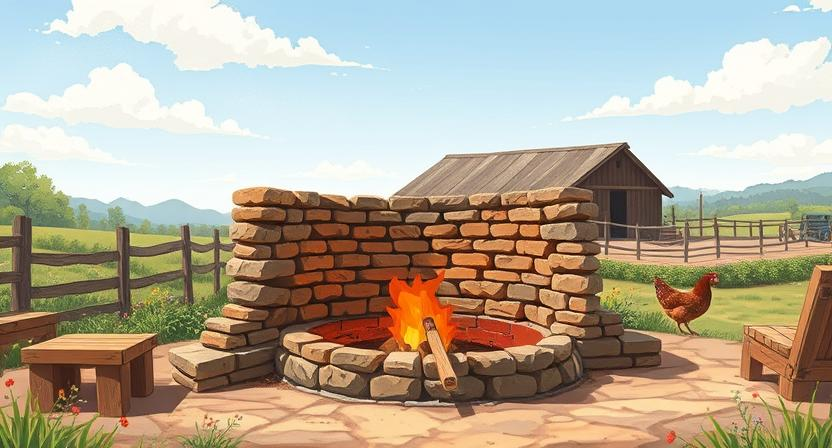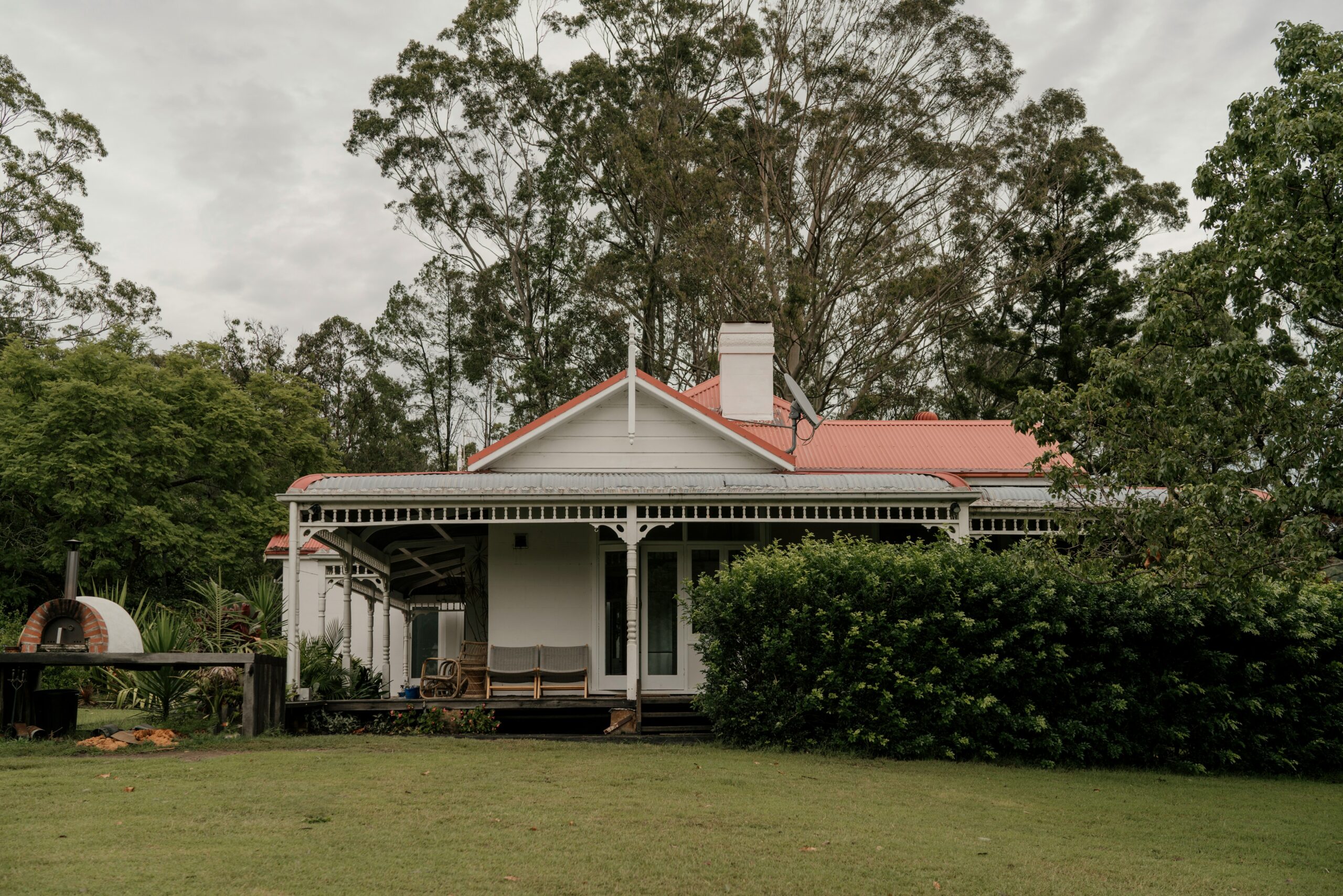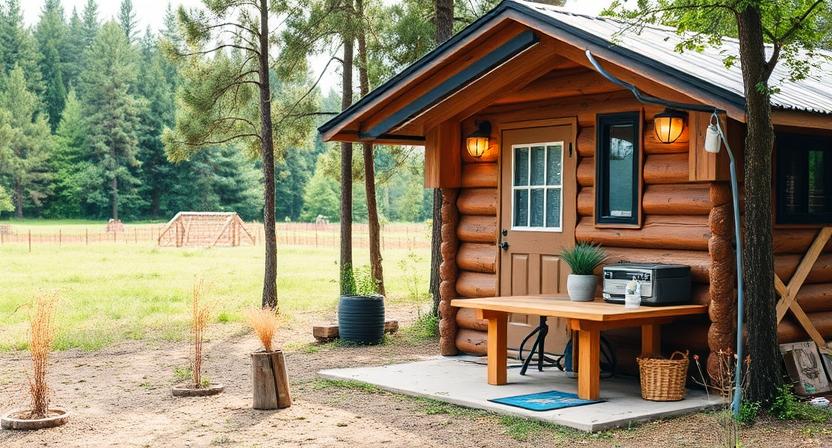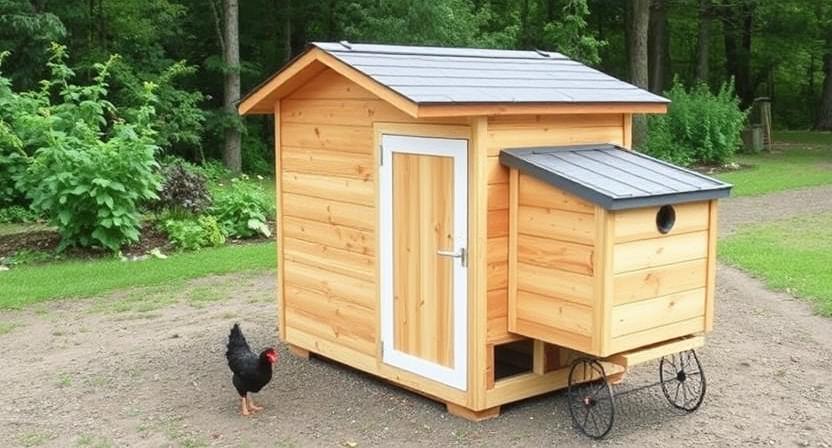Constructing a Fire Pit for Your Backyard Homestead

Planning the Layout of Your Fire Pit

When planning the layout of your fire pit, it’s crucial to consider factors such as the overall aesthetics of your outdoor space, the functionality of the fire pit, and safety measures. The placement of your fire pit should allow for easy access and seating while creating a cozy atmosphere for gatherings. Take into account the surrounding landscape, nearby structures, and prevailing winds to ensure a comfortable and enjoyable fire pit experience.
Additionally, think about the flow of movement around the fire pit area and how it integrates with the rest of your outdoor living space. Whether you prefer a central fire pit as a focal point or a more discreet placement in a corner, the layout should enhance the overall design of your backyard. Consider incorporating elements like seating, lighting, and landscaping to create a welcoming and inviting environment around your fire pit.
• Consider the overall aesthetics of your outdoor space
• Ensure easy access and seating around the fire pit
• Take into account surrounding landscape, nearby structures, and prevailing winds
• Think about the flow of movement around the fire pit area
• Integrate the layout with the rest of your outdoor living space
• Decide on a central focal point or discreet corner placement for the fire pit
Choosing the Right Location for Your Fire Pit
When it comes to choosing the right location for your fire pit, there are a few key factors to consider. Firstly, you’ll want to ensure that the area is clear of any overhanging branches, structures, or flammable materials. Safety should always be a top priority when selecting a spot for your fire pit. Additionally, you’ll want to choose a location that is away from high-traffic areas to minimize the risk of accidents and ensure a peaceful atmosphere for gatherings around the fire.
Another important consideration when selecting the location for your fire pit is the wind direction. You’ll want to place the fire pit in an area where the prevailing winds won’t blow smoke directly towards your house or seating area. This will help to create a more enjoyable experience for you and your guests. Additionally, consider the proximity to seating areas and how the placement of the fire pit can enhance the overall ambiance of your outdoor space.
• Ensure the area is clear of overhanging branches, structures, or flammable materials
• Choose a location away from high-traffic areas for safety and peaceful atmosphere
• Consider wind direction to avoid smoke blowing towards house or seating area
• Proximity to seating areas can enhance overall ambiance of outdoor space
Deciding on the Size and Shape of Your Fire Pit
When deciding on the size and shape of your fire pit, it is important to consider the amount of space you have available in your outdoor area. A large fire pit may be suitable for a spacious backyard where you can accommodate multiple guests, while a smaller fire pit might be more appropriate for a cozy patio setting. Additionally, the shape of your fire pit should complement the overall design of your outdoor space and blend harmoniously with your existing furniture and landscaping.
Before finalizing the size and shape of your fire pit, take into account the primary purpose of the fire pit. If you plan on using it mainly for intimate gatherings with close friends and family, a smaller, round fire pit may create a more intimate atmosphere. However, if you envision hosting larger gatherings or using the fire pit for cooking and grilling, a rectangular or square-shaped fire pit with ample seating around it may be more suitable. Ultimately, the size and shape of your fire pit should reflect your personal preferences and how you intend to use this outdoor feature.
• Consider the amount of space available in your outdoor area
• Large fire pit for spacious backyard, smaller fire pit for cozy patio setting
• Shape should complement overall design of outdoor space
• Take into account primary purpose of fire pit before finalizing size and shape
• Smaller, round fire pit for intimate gatherings, rectangular or square-shaped for larger gatherings or cooking/grilling purposes
• Size and shape should reflect personal preferences and intended use
Gathering Materials for Your Fire Pit
When it comes to gathering materials for your fire pit, it’s essential to ensure you have everything you need before starting the construction process. Depending on the type of fire pit you plan to build, common materials include bricks, concrete blocks, fire-resistant mortar, gravel, sand, and a metal grate or grill for cooking. Additionally, you may want to consider purchasing heat-resistant gloves, a fire poker, and a fire extinguisher for added safety measures.
Before heading to the store or ordering your materials online, make sure you have a clear understanding of the design and size of the fire pit you want to build. This will help you determine the quantity of materials needed and prevent unnecessary trips to the store. Remember to prioritize fire-resistant materials to ensure the longevity and safety of your fire pit. By gathering all the necessary materials in advance, you can streamline the construction process and enjoy your fire pit sooner.
• Bricks
• Concrete blocks
• Fire-resistant mortar
• Gravel
• Sand
• Metal grate or grill for cooking
Before heading to the store or ordering your materials online, make sure you have a clear understanding of the design and size of the fire pit you want to build. This will help you determine the quantity of materials needed and prevent unnecessary trips to the store. Remember to prioritize fire-resistant materials to ensure the longevity and safety of your fire pit. By gathering all the necessary materials in advance, you can streamline the construction process and enjoy your fire pit sooner.
Preparing the Ground for Your Fire Pit
When preparing the ground for your fire pit, it is essential to ensure that the area is level and free of any debris or vegetation that could pose a fire hazard. Begin by marking the desired location for your fire pit using stakes and string to outline its shape and size. Clear the area within this perimeter, removing rocks, roots, and any other obstructions that could inhibit the construction process.
Next, dig a shallow pit where the fire will be contained, making sure to leave enough space around the edges for the foundation and walls of the fire pit. The depth of this pit will depend on the design and size of your fire pit, but typically ranges from 6 to 12 inches deep. Use a shovel to carefully remove the soil, creating a uniformly deep and level base for the foundation of your fire pit. Take care to keep the edges of the pit straight and the bottom flat to facilitate the subsequent construction steps.
• Mark the desired location for your fire pit using stakes and string
• Clear the area within the perimeter of rocks, roots, and obstructions
• Dig a shallow pit for the fire containment area
• Leave enough space around edges for foundation and walls of fire pit
• Depth of pit will depend on design and size, typically 6 to 12 inches deep
Building the Foundation of Your Fire Pit

To build a solid foundation for your fire pit, you’ll first need to mark the area where the foundation will be laid out. Once you have determined the location, clear the ground of any debris, rocks, or plants that could interfere with the foundation’s stability. It’s crucial to ensure that the ground is level to create a sturdy base for your fire pit.
Next, you can start preparing the foundation by digging a shallow trench around the marked perimeter. The depth of the trench will depend on the size and design of your fire pit. Make sure the trench is wide enough to accommodate the foundation materials and provides ample support for the structure. Once the trench is dug, you can begin filling it with a layer of gravel to improve drainage and stability. This foundation will serve as the cornerstone of your fire pit, providing the necessary support for the walls and fire containment structure.
• Mark the area where the foundation will be laid out
• Clear the ground of debris, rocks, and plants
• Ensure that the ground is level for a sturdy base
• Dig a shallow trench around the marked perimeter
• The depth of the trench depends on fire pit size and design
• Make sure trench is wide enough for materials and support
• Fill trench with gravel for drainage and stability
• Foundation will provide support for walls and fire containment structure
Constructing the Walls of Your Fire Pit
When constructing the walls of your fire pit, you have a variety of materials to choose from. Popular options include bricks, concrete blocks, stone, or even metal. Each material offers a different aesthetic and level of durability. Consider the overall look you want to achieve and the durability you need when selecting the material for your fire pit walls.
The height of the walls will also impact the functionality and safety of your fire pit. Taller walls can help contain the flames and provide more seating options around the fire pit. However, shorter walls may be more suitable if you prefer a more open layout or want to easily access the fire. Make sure to carefully plan the height of the walls to best suit your needs and preferences.
When constructing the walls of your fire pit, consider the following options:
• Bricks: Classic and versatile option that offers a traditional look
• Concrete blocks: Affordable and easy to work with, providing a sturdy structure
• Stone: Natural and rustic choice that adds charm to your outdoor space
• Metal: Modern and sleek material that can withstand high temperatures
Factors to consider when determining the height of your fire pit walls:
• Taller walls help contain flames and provide more seating options
• Shorter walls may be preferred for an open layout or easy access to the fire
• Plan carefully to ensure the height meets both functionality and safety needs
Adding a Grate or Grill to Your Fire Pit
Grates or grills are popular additions to fire pits, providing a convenient way to cook food over an open flame. When selecting a grate or grill for your fire pit, be sure to choose one that is made of heat-resistant materials such as stainless steel or cast iron. These materials can withstand high temperatures and are durable enough to last through many cooking sessions.
Before installing the grate or grill, it’s essential to consider the size and shape of your fire pit. The grate or grill should fit securely over the fire pit without being too large or too small. This ensures a safe and stable cooking surface for your food. Additionally, make sure to place the grate or grill at a comfortable height for cooking, allowing easy access to the flames while maintaining a safe distance.
– When selecting a grate or grill, choose one made of heat-resistant materials such as stainless steel or cast iron
– Ensure the grate or grill fits securely over the fire pit without being too large or too small
– Place the grate or grill at a comfortable height for cooking to allow easy access to flames while maintaining a safe distance
Creating a Seating Area Around Your Fire Pit
When designing the seating area around your fire pit, consider the overall ambiance you want to create. Ensure that the seating arrangement allows for easy conversation and a comfortable experience for your guests. Opt for durable and weather-resistant materials to withstand the outdoor elements and frequent use.
To enhance the coziness of the seating area, incorporate cushions, throws, and pillows that not only add comfort but also add a pop of color and style to the space. Additionally, you can add side tables or firewood storage containers within reach of the seating for convenience. With the right seating setup, your fire pit area can become a welcoming and inviting space for gatherings and relaxation.
• Consider the overall ambiance you want to create
• Ensure seating arrangement allows for easy conversation and comfort
• Opt for durable and weather-resistant materials
• Incorporate cushions, throws, and pillows for added comfort and style
• Add side tables or firewood storage containers for convenience
• Create a welcoming space for gatherings and relaxation
Decorating Your Fire Pit Area
When it comes to decorating your fire pit area, you have a plethora of options to add charm and personality to the space. Consider incorporating outdoor rugs or cushions for a comfortable seating area. Hanging string lights or lanterns can create a cozy ambiance, perfect for evenings spent around the fire pit with friends and family. Plants and potted flowers can add a touch of nature and color to enhance the overall appeal of your outdoor space.
Additionally, don’t forget about functional decor items such as a firewood rack or storage container to keep your fire pit area organized and tidy. You can also personalize the space with decorative elements that reflect your style, such as ceramic pots, colorful throw pillows, or even themed decorations for special occasions. By adding these finishing touches, you can transform your fire pit area into a stylish and inviting outdoor retreat.
• Consider incorporating outdoor rugs or cushions for a comfortable seating area
• Hanging string lights or lanterns can create a cozy ambiance
• Plants and potted flowers can add a touch of nature and color
• Don’t forget about functional decor items like a firewood rack or storage container
• Personalize the space with decorative elements that reflect your style, such as ceramic pots, colorful throw pillows, or themed decorations for special occasions.
Ensuring Proper Ventilation for Your Fire Pit

Proper ventilation is essential for your fire pit to burn efficiently and safely. Inadequate airflow can lead to a smoky, poorly burning fire that emits harmful fumes. To ensure proper ventilation, make sure your fire pit is placed in an open area away from any obstructions that could block the flow of air. Additionally, consider the direction of the wind and position your fire pit so that smoke will not blow directly into your living space.
One way to improve ventilation is by incorporating a chimney or flue into your fire pit design. A chimney helps to draw smoke and hot air upward and away from your seating area. This not only reduces the amount of smoke you inhale but also minimizes the risk of a fire hazard. Remember to regularly clean and maintain your chimney to prevent any blockages that could impede proper ventilation.
– Ensure fire pit is placed in an open area with no obstructions
– Consider wind direction when positioning fire pit to prevent smoke blowing into living space
– Incorporate a chimney or flue into fire pit design for improved ventilation
– Regularly clean and maintain chimney to prevent blockages
Installing Safety Features for Your Fire Pit
When it comes to ensuring the safety of your fire pit, there are a few key features that you should consider incorporating into its design. One important safety feature is a spark screen or spark guard, which helps prevent embers and sparks from escaping the fire pit and causing unintended fires. A spark screen typically consists of a mesh dome that sits on top of the fire pit and can be easily removed when adding more wood or tending to the fire.
Another essential safety feature for your fire pit is a sturdy and heat-resistant base or stand that elevates the fire pit off the ground. This not only helps protect the surface underneath the fire pit from heat damage but also reduces the risk of accidental fires caused by the fire pit coming into contact with flammable materials. Additionally, having a stable base for your fire pit can help prevent it from tipping over, especially in crowded or windy conditions.
• A spark screen or spark guard is essential to prevent embers and sparks from escaping
• The mesh dome sits on top of the fire pit and can be easily removed for maintenance
• A sturdy and heat-resistant base or stand elevates the fire pit off the ground
• Protects the surface underneath from heat damage and reduces risk of accidental fires
• Helps prevent tipping over, especially in crowded or windy conditions
Choosing the Right Type of Fuel for Your Fire Pit
When it comes to selecting the appropriate fuel for your fire pit, there are several options to consider. Wood is a popular choice for its traditional appeal and crackling ambiance, but it requires regular maintenance and can produce a fair amount of smoke. On the other hand, gas-fueled fire pits are convenient and easy to control, providing a clean and efficient burning option. They are also low maintenance and do not require constant refueling like wood-burning fire pits do. Additionally, propane fire pits offer portability and flexibility, allowing you to move your fire pit around your outdoor space as needed.
Another alternative to traditional wood and gas fuels is ethanol, which burns cleanly without producing smoke or soot. Ethanol fire pits are eco-friendly and can be used both indoors and outdoors, making them a versatile option for those looking for a modern and sustainable fuel source. Regardless of the type of fuel you choose, it’s essential to consider factors such as cost, convenience, environmental impact, and local regulations when deciding on the right fuel for your fire pit. Each fuel type has its advantages and considerations, so it’s crucial to weigh your options carefully before making a decision.
• Wood is a popular choice for its traditional appeal and crackling ambiance
• Gas-fueled fire pits are convenient, easy to control, and produce clean burning
• Propane fire pits offer portability and flexibility
• Ethanol burns cleanly without producing smoke or soot
• Consider factors such as cost, convenience, environmental impact, and local regulations before choosing a fuel type
Maintaining Your Fire Pit Regularly
To ensure your fire pit remains safe and functional, regular maintenance is key. One important aspect of maintenance is keeping the fire pit clean. Remove any debris or ashes after each use to prevent build-up that could potentially pose a fire hazard. A wire brush can be handy for scrubbing away any residue on the walls of the fire pit. Additionally, inspect the grate or grill regularly for any signs of wear and tear, replacing it if necessary to maintain safe cooking conditions.
Another crucial maintenance task is checking the overall structure of the fire pit for any damage. Look for cracks in the walls, loose stones, or any other signs of deterioration that could compromise the integrity of the fire pit. Addressing these issues promptly can help prevent accidents and prolong the lifespan of your fire pit. Lastly, make sure to store any firewood or fuel in a dry location away from the elements to maintain its quality and effectiveness when used in the fire pit.
• Remove any debris or ashes after each use
• Use a wire brush to scrub away residue on the walls of the fire pit
• Inspect and replace grate or grill if necessary
• Check for cracks, loose stones, or signs of deterioration in the structure
• Store firewood or fuel in a dry location away from elements
Making Sure Your Fire Pit is Legal and Safe to Use
Always check with your local municipality or homeowners’ association to ensure that your fire pit complies with any regulations or codes in place. Some areas may have restrictions on the size, location, and type of fire pit you can have on your property. By familiarizing yourself with the rules beforehand, you can avoid any potential fines or legal issues down the line.
In addition to legal considerations, it’s crucial to prioritize safety when using your fire pit. Keep a safe distance between the fire pit and any flammable structures or materials. Always have a fire extinguisher, water source, or sand nearby to quickly and effectively put out any unexpected flames. Make sure to supervise the fire at all times and never leave it unattended, especially if there are children or pets around. Taking these precautions will help you enjoy your fire pit experience without any unnecessary risks.
• Always check with your local municipality or homeowners’ association to ensure compliance with regulations
• Some areas may have restrictions on size, location, and type of fire pit allowed
• Familiarize yourself with rules to avoid fines or legal issues
• Prioritize safety when using your fire pit
• Keep a safe distance from flammable structures or materials
• Have a fire extinguisher, water source, or sand nearby for emergencies
• Supervise the fire at all times and never leave it unattended
Hosting Gatherings and Events Around Your Fire Pit

Gathering around a fire pit is a wonderful way to bring friends and family together for memorable evenings under the stars. Whether you’re hosting a small intimate gathering or a lively event, a fire pit creates a cozy and inviting atmosphere that encourages conversation and connection. As the flames dance and crackle, guests can relax, unwind, and enjoy the soothing warmth that a fire pit provides.
To enhance the experience of hosting gatherings around your fire pit, consider adding comfortable seating options such as benches, chairs, or even cozy outdoor pillows. Providing ample seating will ensure that your guests can relax and socialize comfortably throughout the evening. Additionally, consider incorporating outdoor lighting such as string lights or lanterns to create a magical ambiance that will add to the festive atmosphere of your gathering. By creating a welcoming and inviting space around your fire pit, you can turn any gathering or event into a memorable and enjoyable occasion for all.
• Adding comfortable seating options such as benches, chairs, or outdoor pillows
• Providing ample seating for guests to relax and socialize comfortably
• Incorporating outdoor lighting like string lights or lanterns for a magical ambiance
• Creating a welcoming and inviting space around the fire pit for all guests to enjoy
Using Your Fire Pit for Cooking and Grilling
When it comes to utilizing your fire pit for cooking and grilling, the possibilities are endless. From roasting marshmallows for s’mores to cooking up a hearty stew in a Dutch oven, your fire pit can serve as a versatile outdoor kitchen. Grilling meat, seafood, or vegetables over an open flame can impart a delicious smoky flavor that is hard to replicate with traditional cooking methods.
In addition to traditional grilling methods, you can also get creative with your fire pit cooking by experimenting with different techniques and recipes. Try using skewers to cook kebabs, or wrap vegetables in foil packets with herbs and spices for a flavorful side dish. The heat from the fire pit can be adjusted by adding or removing logs, allowing you to control the cooking temperature and achieve the perfect sear on your food.
• Roasting marshmallows for s’mores
• Cooking up a hearty stew in a Dutch oven
• Grilling meat, seafood, or vegetables over an open flame
• Experimenting with different techniques and recipes
• Using skewers to cook kebabs
• Wrapping vegetables in foil packets with herbs and spices
Experimenting with Different Fire Pit Designs
When it comes to fire pit designs, the possibilities are endless. You can opt for a traditional round shape or get creative with a square or rectangular design. Some people prefer a sunken fire pit for a sleek look, while others enjoy the rustic charm of an above-ground fire pit. Experimenting with different materials such as stone, brick, or metal can also add a unique touch to your fire pit design.
Furthermore, consider incorporating additional features like built-in seating, a water feature, or even a fire pit table for added functionality. Mixing and matching different elements like fire glass, lava rocks, or even colorful ceramic tiles can further enhance the visual appeal of your fire pit. The key is to let your creativity shine and create a fire pit design that not only suits your style but also complements your outdoor space beautifully.
• Round, square, or rectangular designs
• Sunken or above-ground options
• Materials like stone, brick, or metal for a unique touch
• Built-in seating, water features, or fire pit tables for added functionality
• Mixing and matching elements like fire glass, lava rocks, or ceramic tiles to enhance visual appeal.
Enhancing the Ambiance of Your Fire Pit Area
To create a cozy and inviting ambiance in your fire pit area, consider adding outdoor lighting options such as string lights, lanterns, or even solar-powered fixtures. These lighting elements not only illuminate the space but also add a warm glow that enhances the overall atmosphere. Additionally, incorporating comfortable seating options like outdoor sofas, chairs, or even floor cushions can make your fire pit area a relaxing haven for gatherings with friends and family.
Furthermore, adding natural elements like potted plants, succulents, or even a small garden around your fire pit can bring a touch of greenery and life to the space. Choose plants that are suitable for outdoor settings and require minimal maintenance to ensure they thrive in the environment. Additionally, you can incorporate decorative elements such as fire pit glass, colorful rocks, or unique furniture pieces to personalize the area and make it a reflection of your style and preferences.
• String lights, lanterns, or solar-powered fixtures
• Outdoor sofas, chairs, or floor cushions for seating options
• Potted plants, succulents, or a small garden for natural elements
• Fire pit glass, colorful rocks, or unique furniture pieces for decorative touches
By combining these elements in your fire pit area, you can create a welcoming and cozy space that is perfect for entertaining guests or simply relaxing after a long day. Whether you prefer a modern aesthetic with sleek furniture and minimalist decor or a more rustic feel with natural materials and earthy tones, there are endless possibilities to enhance the ambiance of your fire pit area. Experiment with different combinations of lighting, seating arrangements, and decorative accents to find the perfect balance that suits your style and creates the ideal atmosphere for enjoying time outdoors by the warmth of the fire.
Embracing the Warmth and Comfort of Your Fire Pit
Whether it’s gathering with friends on a chilly evening or simply enjoying a peaceful moment alone, the warmth and comfort of a fire pit can create a cozy and inviting atmosphere. The crackling sound of the fire, the dancing flames, and the radiant heat all contribute to a sense of relaxation and contentment. By embracing the warmth of your fire pit, you can escape from the distractions of everyday life and bask in the soothing ambiance it provides.
In addition to its physical warmth, a fire pit also offers emotional comfort and a sense of community. Sitting around the fire with loved ones, sharing stories, roasting marshmallows, or simply enjoying each other’s company can strengthen bonds and create lasting memories. The flickering light of the fire can create a sense of intimacy and connection, bringing people together in a shared moment of warmth and joy. By embracing the warmth and comfort of your fire pit, you can create a space where laughter flows freely and hearts are lifted.
• Gathering around a fire pit with friends or family creates a cozy and inviting atmosphere
• The crackling sound of the fire and dancing flames contribute to relaxation
• The radiant heat provides physical warmth and emotional comfort
• Sharing stories, roasting marshmallows, and enjoying each other’s company strengthens bonds
• The flickering light of the fire creates intimacy and connection among people




